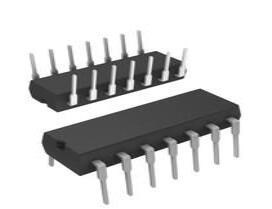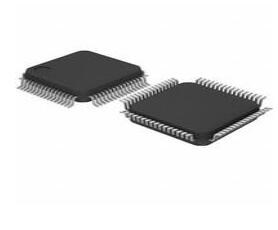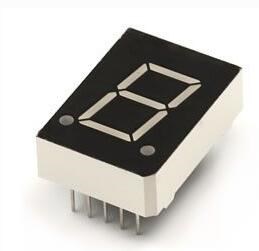Xilinx XC95144XL-10TQG144I CPLD: Features, Performance and Applications
0.5mm Tin PMIC XC9500XL Series XC95144XL 100MHz 3.3V 144-LQFP
Is XC95144XL-10TQG144I ideal for high-performance tasks? Explore its speed, low power, and reliability to see if it outshines other CPLDs for your needs.
Product Introduction
The XC95144XL-10TQG144I stands out as a reliable choice for high-performance applications due to its impressive technical capabilities. Its 5 ns pin-to-pin logic delays and system frequency of up to 178 MHz ensure exceptional speed. Designed with 144 macrocells and 3,200 usable gates, it handles complex tasks efficiently. This device also offers low power operation, 5V tolerant I/O pins, and endurance exceeding 10,000 program/erase cycles. Furthermore, its 20-year data retention and ESD protection exceeding 2,000V enhance reliability and longevity. These features make it a cost-effective solution for demanding industries.
Key Features of XC95144XL-10TQG144I

Technical Specifications
The XC95144XL-10TQG144I offers a robust set of technical specifications that cater to high-performance applications. It features 144 macrocells and 117 general-purpose input/output (GPIO) pins, making it suitable for complex digital designs. Its 5 ns pin-to-pin logic delay ensures rapid processing, while the system frequency reaches up to 178 MHz. These specifications enable the device to handle demanding tasks with precision and speed.
The table below highlights some of the key features of the XC95144XL-10TQG144I compared to other similar devices:
| Feature | XC95144XL-10TQG144I | XC95144-10TQG100I |
|---|---|---|
| Number of Macrocells | 144 | N/A |
| Number of GPIO | 117 | N/A |
| Package Type | TQFP-144 | N/A |
| Suitable Applications | Complex digital designs | N/A |
Unique Features
This device stands out due to its unique features. It supports 5V-tolerant I/O pins, ensuring compatibility with a wide range of systems. Its low-power operation makes it ideal for energy-sensitive applications. Additionally, the XC95144XL-10TQG144I boasts an endurance of over 10,000 program/erase cycles and a data retention period of 20 years. These attributes enhance its reliability and longevity, making it a dependable choice for industrial and commercial use.
High-Performance Design
The XC95144XL-10TQG144I is engineered for high performance. Its architecture minimizes propagation delays, ensuring faster data processing. The device also incorporates advanced ESD protection exceeding 2,000V, safeguarding it against electrical surges. This design ensures consistent performance even in demanding environments, such as industrial control systems and automotive applications.
Performance of XC95144XL-10TQG144I
Speed and Processing Capabilities
The XC95144XL-10TQG144I delivers exceptional speed, making it a top choice for high-performance applications. Its 5 ns pin-to-pin logic delay ensures rapid data transfer, which is critical for time-sensitive operations. With a system frequency of up to 178 MHz, this device can handle complex tasks without compromising efficiency.
The architecture of the XC95144XL-10TQG144I optimizes processing capabilities by minimizing propagation delays. This design allows it to execute instructions faster than many competing devices. Engineers often rely on this device for applications requiring quick response times, such as industrial automation and telecommunications.
Tip: For projects demanding high-speed processing, the XC95144XL-10TQG144I offers a reliable solution with its advanced logic delay and frequency capabilities.
Power Efficiency
Power efficiency is a standout feature of the XC95144XL-10TQG144I. Its low-power operation reduces energy consumption, making it suitable for applications where power conservation is essential. This feature is particularly beneficial in portable devices and systems with limited power resources.
The device's ability to operate efficiently without sacrificing performance sets it apart from other CPLDs. By consuming less power, it not only lowers operational costs but also contributes to environmentally friendly designs. This balance of power and performance makes it a preferred choice for energy-sensitive industries.
Reliability in Demanding Applications
Reliability is a critical factor in choosing a CPLD, and the XC95144XL-10TQG144I excels in this area. Its endurance of over 10,000 program/erase cycles ensures long-term usability, even in applications requiring frequent updates. Additionally, the device offers a data retention period of 20 years, which guarantees consistent performance over extended periods.
The XC95144XL-10TQG144I also includes advanced ESD protection exceeding 2,000V, safeguarding it against electrical surges. This feature enhances its durability in harsh environments, such as industrial control systems and automotive applications. Engineers trust this device for its ability to maintain stability under demanding conditions.
Note: The XC95144XL-10TQG144I's combination of endurance, data retention, and ESD protection makes it a dependable choice for critical applications.
XC95144XL-10TQG144I vs. Alternatives
Comparison with Competing CPLDs
When evaluating the XC95144XL-10TQG144I against other CPLDs (Complex Programmable Logic Devices), several factors come into play, including speed, power efficiency, and reliability. Competing devices, such as the Altera MAX II series or Lattice ispMACH 4000 family, offer similar functionalities but differ in specific areas.
| Feature | XC95144XL-10TQG144I | Altera MAX II EPM240 | Lattice ispMACH 4256ZE |
|---|---|---|---|
| Pin-to-Pin Logic Delay | 5 ns | 6.2 ns | 5.5 ns |
| System Frequency | 178 MHz | 150 MHz | 150 MHz |
| Power Consumption | Low | Ultra-Low | Low |
| Endurance (Program Cycles) | 10,000+ | 10,000+ | 10,000+ |
| Data Retention | 20 years | 20 years | 20 years |
The XC95144XL-10TQG144I excels in speed and system frequency, making it a strong contender for applications requiring rapid data processing. While the Altera MAX II series boasts ultra-low power consumption, it sacrifices some speed. The Lattice ispMACH 4256ZE offers comparable performance but lacks the same level of pin-to-pin logic delay optimization.
Note: The choice between these devices often depends on the specific requirements of the application, such as speed, power efficiency, or compatibility with existing systems.
Advantages of XC95144XL-10TQG144I
The XC95144XL-10TQG144I offers several advantages that set it apart from its competitors:
High-Speed Performance: Its 5 ns pin-to-pin logic delay and 178 MHz system frequency ensure faster data processing compared to many alternatives.
Power Efficiency: The device operates with low power consumption, making it suitable for energy-sensitive applications.
Durability: With over 10,000 program/erase cycles and 20 years of data retention, it provides long-term reliability.
Compatibility: Its 5V-tolerant I/O pins allow seamless integration with a wide range of systems.
Robust Design: Advanced ESD protection exceeding 2,000V ensures durability in harsh environments.
These features make the XC95144XL-10TQG144I a preferred choice for industries like telecommunications, automotive, and industrial control, where performance and reliability are critical.
Limitations Compared to Alternatives
Despite its strengths, the XC95144XL-10TQG144I has some limitations when compared to other CPLDs:
Power Consumption: While it is efficient, some alternatives, such as the Altera MAX II series, offer ultra-low power consumption, which may be more suitable for battery-operated devices.
Package Size: The TQFP-144 package may not be ideal for applications with strict space constraints, where smaller packages are preferred.
Cost: Depending on the supplier and region, the XC95144XL-10TQG144I may have a slightly higher upfront cost compared to certain alternatives.
These limitations highlight the importance of evaluating the specific needs of a project before selecting a CPLD. For applications prioritizing ultra-low power or compact designs, other options might be more suitable.
Cost-Effectiveness of XC95144XL-10TQG144I
Pricing and Affordability
The XC95144XL-10TQG144I offers competitive pricing that appeals to industries seeking high-performance programmable logic devices without exceeding budget constraints. Its cost aligns well with its technical capabilities, making it an attractive option for engineers and designers. While some alternatives may have slightly lower upfront costs, the XC95144XL-10TQG144I provides a balanced price-to-performance ratio that justifies its investment.
Bulk purchasing options further enhance affordability, especially for large-scale projects. Suppliers often provide discounts for higher quantities, which reduces the overall cost per unit. This pricing structure makes the XC95144XL-10TQG144I a practical choice for businesses aiming to optimize expenses while maintaining quality.
Value for Performance
The XC95144XL-10TQG144I delivers exceptional value for its performance. Its high-speed processing capabilities, low power consumption, and robust reliability ensure that users receive maximum functionality for their investment. Engineers often prioritize devices that combine efficiency with durability, and this CPLD meets those expectations.
Its ability to handle complex tasks with precision makes it suitable for demanding applications. Industries such as telecommunications and automotive benefit from its consistent performance under challenging conditions. The XC95144XL-10TQG144I’s advanced features, including ESD protection and long data retention, further enhance its value proposition.
Tip: Investing in the XC95144XL-10TQG144I ensures a reliable solution for projects requiring both speed and endurance.
Long-Term Benefits
The XC95144XL-10TQG144I provides significant long-term benefits that outweigh its initial cost. Its endurance of over 10,000 program/erase cycles ensures extended usability, reducing the need for frequent replacements. The 20-year data retention capability guarantees consistent performance over time, making it ideal for applications requiring long-term reliability.
Its robust design, including advanced ESD protection, minimizes the risk of damage in harsh environments. This durability reduces maintenance costs and downtime, contributing to overall cost savings. Businesses relying on the XC95144XL-10TQG144I can expect a dependable solution that supports their operations for years.
Note: Choosing the XC95144XL-10TQG144I ensures a cost-effective solution that balances upfront affordability with long-term reliability.
Use Cases for XC95144XL-10TQG144I
Applications in Industrial Control
The XC95144XL-10TQG144I plays a vital role in industrial control systems. Its high-speed processing and low power consumption make it suitable for managing complex automation tasks. Industries rely on this device to control machinery, monitor production lines, and ensure operational efficiency. Its 5V-tolerant I/O pins enhance compatibility with various industrial equipment, while its robust design ensures reliability in harsh environments.
For example, in manufacturing plants, this CPLD enables precise timing and synchronization of robotic arms. It also supports real-time data processing, which is critical for maintaining safety and productivity. The device’s long-term reliability reduces downtime, making it a cost-effective solution for industrial applications.
Telecommunications and Automotive Systems
Telecommunications and automotive industries benefit significantly from the XC95144XL-10TQG144I. Its ability to handle high-frequency signals ensures seamless communication in telecommunication networks. Engineers use it to design systems that require rapid data transfer, such as signal routing and network switches.
In automotive systems, this CPLD supports advanced driver-assistance systems (ADAS) and in-vehicle infotainment. Its low power consumption makes it ideal for battery-powered applications, while its durability ensures consistent performance under extreme conditions. The device’s ESD protection further enhances its suitability for automotive environments, where electrical surges are common.
Scenarios Where It Excels
The XC95144XL-10TQG144I excels in scenarios requiring speed, reliability, and energy efficiency. It is particularly effective in applications demanding real-time processing, such as industrial automation and telecommunications. Its robust design makes it a dependable choice for environments with high electrical interference or temperature fluctuations.
This device also shines in projects with long-term operational requirements. Its 20-year data retention and high endurance ensure consistent performance over time. Engineers often choose it for applications where downtime is not an option, such as critical control systems and safety mechanisms.
The XC95144XL-10TQG144I demonstrates exceptional performance, reliability, and cost-effectiveness, making it a strong candidate for high-performance applications. Its high-speed processing, low power consumption, and robust design cater to industries requiring precision and durability. While some alternatives offer ultra-low power or smaller packages, this device excels in speed and long-term reliability. Engineers seeking a dependable solution for demanding environments will find it a valuable choice. Evaluating specific project needs ensures the best fit, but the XC95144XL-10TQG144I remains a top-tier option for many use cases.
FAQ
1. What makes the XC95144XL-10TQG144I suitable for industrial applications?
The XC95144XL-10TQG144I offers high-speed processing, low power consumption, and robust durability. Its 5V-tolerant I/O pins and advanced ESD protection ensure compatibility and reliability in harsh environments. These features make it ideal for industrial automation and control systems.
2. How does the XC95144XL-10TQG144I compare to other CPLDs in terms of speed?
The XC95144XL-10TQG144I delivers a 5 ns pin-to-pin logic delay and a system frequency of 178 MHz. These specifications outperform many alternatives, such as the Altera MAX II series, which has a slower logic delay of 6.2 ns.
3. Is the XC95144XL-10TQG144I energy-efficient?
Yes, the XC95144XL-10TQG144I operates with low power consumption. This efficiency makes it suitable for energy-sensitive applications, including portable devices and systems with limited power resources.
4. Can the XC95144XL-10TQG144I handle long-term operations?
The XC95144XL-10TQG144I supports over 10,000 program/erase cycles and offers 20 years of data retention. These features ensure consistent performance and reliability for long-term applications.
5. What industries benefit most from the XC95144XL-10TQG144I?
Industries like telecommunications, automotive, and industrial control benefit significantly. Its high-speed processing, low power usage, and robust design make it ideal for applications requiring precision, durability, and long-term reliability.
Tip: Evaluate your project requirements to determine if the XC95144XL-10TQG144I aligns with your specific needs.
Specifications
- TypeParameter
- Factory Lead Time10 Weeks
- Contact Plating
Contact plating (finish) provides corrosion protection for base metals and optimizes the mechanical and electrical properties of the contact interfaces.
Tin - Mount
In electronic components, the term "Mount" typically refers to the method or process of physically attaching or fixing a component onto a circuit board or other electronic device. This can involve soldering, adhesive bonding, or other techniques to secure the component in place. The mounting process is crucial for ensuring proper electrical connections and mechanical stability within the electronic system. Different components may have specific mounting requirements based on their size, shape, and function, and manufacturers provide guidelines for proper mounting procedures to ensure optimal performance and reliability of the electronic device.
Surface Mount - Mounting Type
The "Mounting Type" in electronic components refers to the method used to attach or connect a component to a circuit board or other substrate, such as through-hole, surface-mount, or panel mount.
Surface Mount - Package / Case
refers to the protective housing that encases an electronic component, providing mechanical support, electrical connections, and thermal management.
144-LQFP - Memory TypesFLASH
- Number of I/Os117
- Operating Temperature
The operating temperature is the range of ambient temperature within which a power supply, or any other electrical equipment, operate in. This ranges from a minimum operating temperature, to a peak or maximum operating temperature, outside which, the power supply may fail.
-40°C~85°C TA - Packaging
Semiconductor package is a carrier / shell used to contain and cover one or more semiconductor components or integrated circuits. The material of the shell can be metal, plastic, glass or ceramic.
Tray - Series
In electronic components, the "Series" refers to a group of products that share similar characteristics, designs, or functionalities, often produced by the same manufacturer. These components within a series typically have common specifications but may vary in terms of voltage, power, or packaging to meet different application needs. The series name helps identify and differentiate between various product lines within a manufacturer's catalog.
XC9500XL - Published1996
- JESD-609 Code
The "JESD-609 Code" in electronic components refers to a standardized marking code that indicates the lead-free solder composition and finish of electronic components for compliance with environmental regulations.
e3 - Pbfree Code
The "Pbfree Code" parameter in electronic components refers to the code or marking used to indicate that the component is lead-free. Lead (Pb) is a toxic substance that has been widely used in electronic components for many years, but due to environmental concerns, there has been a shift towards lead-free alternatives. The Pbfree Code helps manufacturers and users easily identify components that do not contain lead, ensuring compliance with regulations and promoting environmentally friendly practices. It is important to pay attention to the Pbfree Code when selecting electronic components to ensure they meet the necessary requirements for lead-free applications.
yes - Part Status
Parts can have many statuses as they progress through the configuration, analysis, review, and approval stages.
Active - Moisture Sensitivity Level (MSL)
Moisture Sensitivity Level (MSL) is a standardized rating that indicates the susceptibility of electronic components, particularly semiconductors, to moisture-induced damage during storage and the soldering process, defining the allowable exposure time to ambient conditions before they require special handling or baking to prevent failures
3 (168 Hours) - Number of Terminations144
- ECCN Code
An ECCN (Export Control Classification Number) is an alphanumeric code used by the U.S. Bureau of Industry and Security to identify and categorize electronic components and other dual-use items that may require an export license based on their technical characteristics and potential for military use.
EAR99 - Additional Feature
Any Feature, including a modified Existing Feature, that is not an Existing Feature.
YES - Terminal Position
In electronic components, the term "Terminal Position" refers to the physical location of the connection points on the component where external electrical connections can be made. These connection points, known as terminals, are typically used to attach wires, leads, or other components to the main body of the electronic component. The terminal position is important for ensuring proper connectivity and functionality of the component within a circuit. It is often specified in technical datasheets or component specifications to help designers and engineers understand how to properly integrate the component into their circuit designs.
QUAD - Terminal Form
Occurring at or forming the end of a series, succession, or the like; closing; concluding.
GULL WING - Peak Reflow Temperature (Cel)
Peak Reflow Temperature (Cel) is a parameter that specifies the maximum temperature at which an electronic component can be exposed during the reflow soldering process. Reflow soldering is a common method used to attach electronic components to a circuit board. The Peak Reflow Temperature is crucial because it ensures that the component is not damaged or degraded during the soldering process. Exceeding the specified Peak Reflow Temperature can lead to issues such as component failure, reduced performance, or even permanent damage to the component. It is important for manufacturers and assemblers to adhere to the recommended Peak Reflow Temperature to ensure the reliability and functionality of the electronic components.
260 - Supply Voltage
Supply voltage refers to the electrical potential difference provided to an electronic component or circuit. It is crucial for the proper operation of devices, as it powers their functions and determines performance characteristics. The supply voltage must be within specified limits to ensure reliability and prevent damage to components. Different electronic devices have specific supply voltage requirements, which can vary widely depending on their design and intended application.
3.3V - Terminal Pitch
The center distance from one pole to the next.
0.5mm - Frequency
In electronic components, the parameter "Frequency" refers to the rate at which a signal oscillates or cycles within a given period of time. It is typically measured in Hertz (Hz) and represents how many times a signal completes a full cycle in one second. Frequency is a crucial aspect in electronic components as it determines the behavior and performance of various devices such as oscillators, filters, and communication systems. Understanding the frequency characteristics of components is essential for designing and analyzing electronic circuits to ensure proper functionality and compatibility with other components in a system.
100MHz - Time@Peak Reflow Temperature-Max (s)
Time@Peak Reflow Temperature-Max (s) refers to the maximum duration that an electronic component can be exposed to the peak reflow temperature during the soldering process, which is crucial for ensuring reliable solder joint formation without damaging the component.
30 - Base Part Number
The "Base Part Number" (BPN) in electronic components serves a similar purpose to the "Base Product Number." It refers to the primary identifier for a component that captures the essential characteristics shared by a group of similar components. The BPN provides a fundamental way to reference a family or series of components without specifying all the variations and specific details.
XC95144XL - Pin Count
a count of all of the component leads (or pins)
144 - Operating Supply Voltage
The voltage level by which an electrical system is designated and to which certain operating characteristics of the system are related.
3.3V - Programmable Type
These include Field Programmable Logic Devices (FPGAs), Complex Programmable Logic Devices (CPLD) and Programmable Logic Devices (PLD, PLA, PAL, GAL). There are also devices that are the analog equivalent of these called field programmable analog arrays.
In System Programmable (min 10K program/erase cycles) - Max Supply Voltage
In general, the absolute maximum common-mode voltage is VEE-0.3V and VCC+0.3V, but for products without a protection element at the VCC side, voltages up to the absolute maximum rated supply voltage (i.e. VEE+36V) can be supplied, regardless of supply voltage.
3.6V - Min Supply Voltage
The minimum supply voltage (V min ) is explored for sequential logic circuits by statistically simulating the impact of within-die process variations and gate-dielectric soft breakdown on data retention and hold time.
3V - Propagation Delay
the flight time of packets over the transmission link and is limited by the speed of light.
10 ns - Turn On Delay Time
Turn-on delay, td(on), is the time taken to charge the input capacitance of the device before drain current conduction can start.
10 ns - Number of Logic Elements/Cells8
- Number of Gates
The number of gates per IC varies depending on the number of inputs per gate. Two?input gates are common, but if only a single input is required, such as in the 744 NOT(or inverter) gates, a 14 pin IC can accommodate 6 (or Hex) gates.
3200 - Speed Grade
Speed grade is a specification in electronic components that indicates the maximum operating speed at which the component can reliably function. It is commonly used for integrated circuits, particularly in digital logic devices and programmable logic devices. The speed grade is typically denoted by a number or letter code that correlates to the maximum frequency or propagation delay of the device, influencing its performance in high-speed applications. Components with higher speed grades are capable of faster processing and lower signal delay compared to those with lower grades.
10 - Output Function
An output function is a function that an optimization function calls at each iteration of its algorithm. Typically, you use an output function to generate graphical output, record the history of the data the algorithm generates, or halt the algorithm based on the data at the current iteration.
MACROCELL - Number of Macro Cells144
- JTAG BST
JTAG BST stands for Joint Test Action Group Boundary Scan Test. It is a testing technique used in electronic components to verify the functionality of integrated circuits on a printed circuit board. The JTAG BST method allows for testing of individual components without the need for physical access to the pins of the component, making it a valuable tool for debugging and testing complex electronic systems. By using a standardized test access port and a set of test logic, JTAG BST can help identify faults, shorts, and other issues in electronic components quickly and efficiently.
YES - Voltage Supply - Internal
Voltage Supply - Internal is a parameter in electronic components that refers to the internal voltage supply required for the proper functioning of the component. This voltage supply is typically generated within the component itself and is used to power its internal circuitry. It is important for the component to receive the correct internal voltage supply to ensure reliable operation and performance. The specified voltage supply range for a component must be adhered to in order to prevent damage or malfunction. Manufacturers provide this information in the component's datasheet to guide users in proper integration and usage.
3V~3.6V - Height1.4mm
- Length20mm
- Width20mm
- Radiation Hardening
Radiation hardening is the process of making electronic components and circuits resistant to damage or malfunction caused by high levels of ionizing radiation, especially for environments in outer space (especially beyond the low Earth orbit), around nuclear reactors and particle accelerators, or during nuclear accidents or nuclear warfare.
No - RoHS Status
RoHS means “Restriction of Certain Hazardous Substances” in the “Hazardous Substances Directive” in electrical and electronic equipment.
ROHS3 Compliant - Lead Free
Lead Free is a term used to describe electronic components that do not contain lead as part of their composition. Lead is a toxic material that can have harmful effects on human health and the environment, so the electronics industry has been moving towards lead-free components to reduce these risks. Lead-free components are typically made using alternative materials such as silver, copper, and tin. Manufacturers must comply with regulations such as the Restriction of Hazardous Substances (RoHS) directive to ensure that their products are lead-free and environmentally friendly.
Lead Free
Parts with Similar Specs
- ImagePart NumberManufacturerPackage / CasePropagation DelayNumber of Macro CellsNumber of I/OMemory TypeMin Supply VoltageSupply VoltageMax Supply VoltageView Compare
XC95144XL-10TQG144I
144-LQFP
10 ns
144
117
FLASH
3 V
3.3 V
3.6 V
144-LQFP
7.5 ns
128
96
EEPROM
3 V
3.3 V
3.6 V
144-LQFP
7.5 ns
128
96
EEPROM
3 V
3.3 V
3.6 V
160-LQFP
10 ns
128
133
EEPROM
3 V
3.3 V
3.6 V
160-LQFP
10 ns
128
133
EEPROM
3 V
3.3 V
3.6 V
Datasheet PDF
- Datasheets :
- PCN Design/Specification :
- PCN Assembly/Origin :
- Environmental Information :
 LM2900 Operational Amplifier: Datasheet, Equivalent, Pinout
LM2900 Operational Amplifier: Datasheet, Equivalent, Pinout11 October 20211857
 STM32F411RET6 Microcontrollers: Pinout, Features and Application
STM32F411RET6 Microcontrollers: Pinout, Features and Application13 July 20214480
 2N3702 PNP Transistor: Pinout, Datasheet, and Alternatives
2N3702 PNP Transistor: Pinout, Datasheet, and Alternatives24 August 20211928
 18650 vs. 21700: What Difference is between them?
18650 vs. 21700: What Difference is between them?26 April 20229868
 SHT31 Humidity Sensor: Pinout, Datasheet and Advantages
SHT31 Humidity Sensor: Pinout, Datasheet and Advantages01 September 202110042
 MAN6760 Display Modules: Datasheet, Manufacturer, Application
MAN6760 Display Modules: Datasheet, Manufacturer, Application02 November 20213327
 STM8L052C6T6 Features, Specifications and Applications
STM8L052C6T6 Features, Specifications and Applications24 July 2025100
 STM32L031F6P6 vs STM32L011D4P6 STMicroelectronics Microcontroller
STM32L031F6P6 vs STM32L011D4P6 STMicroelectronics Microcontroller10 June 2025296
 What is IMU: Definition, Features and Prospects
What is IMU: Definition, Features and Prospects12 April 20223813
 Using ESP32 to Make an IoT Weather Station
Using ESP32 to Make an IoT Weather Station24 February 20235985
 Tunnel Diode: Definition, Features and Tunneling Process
Tunnel Diode: Definition, Features and Tunneling Process25 August 20209465
 All About Video Connectors and Their Uses in Today’s Technology
All About Video Connectors and Their Uses in Today’s Technology02 July 2025945
 Capacitor Basic: How do Capacitors Work?
Capacitor Basic: How do Capacitors Work?18 April 202514706
 What is Mini LED?
What is Mini LED?08 December 20204140
 Arduino Based Gas Leakage Detection
Arduino Based Gas Leakage Detection29 August 20237067
 Methods for measuring the temperature of semiconductor devices
Methods for measuring the temperature of semiconductor devices14 November 20222038
Xilinx Inc.
In Stock: 12289
United States
China
Canada
Japan
Russia
Germany
United Kingdom
Singapore
Italy
Hong Kong(China)
Taiwan(China)
France
Korea
Mexico
Netherlands
Malaysia
Austria
Spain
Switzerland
Poland
Thailand
Vietnam
India
United Arab Emirates
Afghanistan
Åland Islands
Albania
Algeria
American Samoa
Andorra
Angola
Anguilla
Antigua & Barbuda
Argentina
Armenia
Aruba
Australia
Azerbaijan
Bahamas
Bahrain
Bangladesh
Barbados
Belarus
Belgium
Belize
Benin
Bermuda
Bhutan
Bolivia
Bonaire, Sint Eustatius and Saba
Bosnia & Herzegovina
Botswana
Brazil
British Indian Ocean Territory
British Virgin Islands
Brunei
Bulgaria
Burkina Faso
Burundi
Cabo Verde
Cambodia
Cameroon
Cayman Islands
Central African Republic
Chad
Chile
Christmas Island
Cocos (Keeling) Islands
Colombia
Comoros
Congo
Congo (DRC)
Cook Islands
Costa Rica
Côte d’Ivoire
Croatia
Cuba
Curaçao
Cyprus
Czechia
Denmark
Djibouti
Dominica
Dominican Republic
Ecuador
Egypt
El Salvador
Equatorial Guinea
Eritrea
Estonia
Eswatini
Ethiopia
Falkland Islands
Faroe Islands
Fiji
Finland
French Guiana
French Polynesia
Gabon
Gambia
Georgia
Ghana
Gibraltar
Greece
Greenland
Grenada
Guadeloupe
Guam
Guatemala
Guernsey
Guinea
Guinea-Bissau
Guyana
Haiti
Honduras
Hungary
Iceland
Indonesia
Iran
Iraq
Ireland
Isle of Man
Israel
Jamaica
Jersey
Jordan
Kazakhstan
Kenya
Kiribati
Kosovo
Kuwait
Kyrgyzstan
Laos
Latvia
Lebanon
Lesotho
Liberia
Libya
Liechtenstein
Lithuania
Luxembourg
Macao(China)
Madagascar
Malawi
Maldives
Mali
Malta
Marshall Islands
Martinique
Mauritania
Mauritius
Mayotte
Micronesia
Moldova
Monaco
Mongolia
Montenegro
Montserrat
Morocco
Mozambique
Myanmar
Namibia
Nauru
Nepal
New Caledonia
New Zealand
Nicaragua
Niger
Nigeria
Niue
Norfolk Island
North Korea
North Macedonia
Northern Mariana Islands
Norway
Oman
Pakistan
Palau
Palestinian Authority
Panama
Papua New Guinea
Paraguay
Peru
Philippines
Pitcairn Islands
Portugal
Puerto Rico
Qatar
Réunion
Romania
Rwanda
Samoa
San Marino
São Tomé & Príncipe
Saudi Arabia
Senegal
Serbia
Seychelles
Sierra Leone
Sint Maarten
Slovakia
Slovenia
Solomon Islands
Somalia
South Africa
South Sudan
Sri Lanka
St Helena, Ascension, Tristan da Cunha
St. Barthélemy
St. Kitts & Nevis
St. Lucia
St. Martin
St. Pierre & Miquelon
St. Vincent & Grenadines
Sudan
Suriname
Svalbard & Jan Mayen
Sweden
Syria
Tajikistan
Tanzania
Timor-Leste
Togo
Tokelau
Tonga
Trinidad & Tobago
Tunisia
Turkey
Turkmenistan
Turks & Caicos Islands
Tuvalu
U.S. Outlying Islands
U.S. Virgin Islands
Uganda
Ukraine
Uruguay
Uzbekistan
Vanuatu
Vatican City
Venezuela
Wallis & Futuna
Yemen
Zambia
Zimbabwe


















